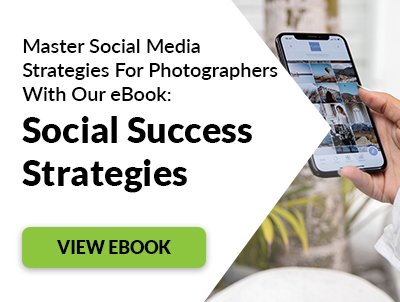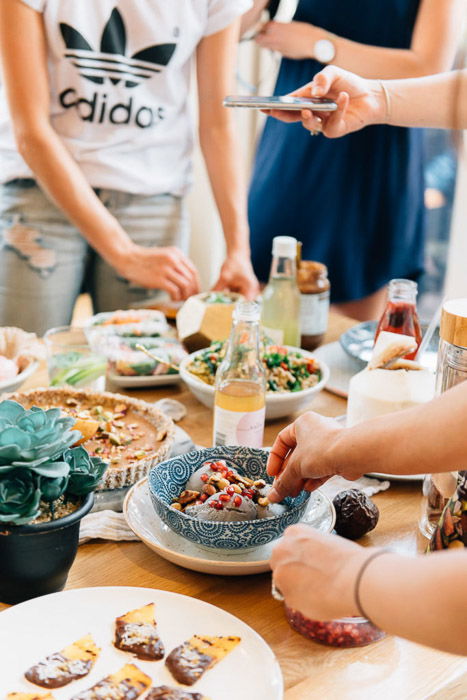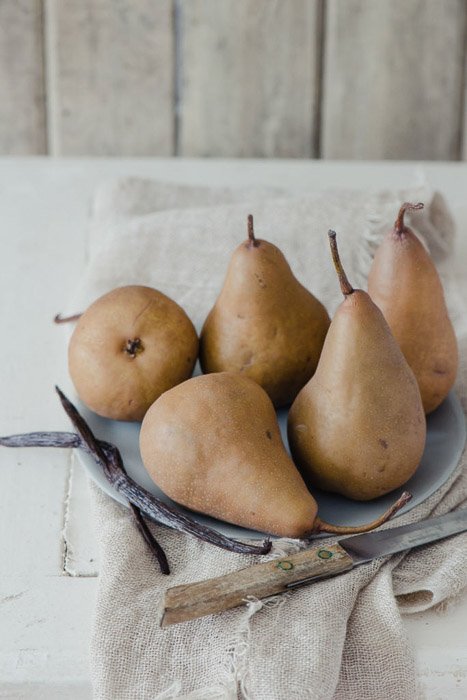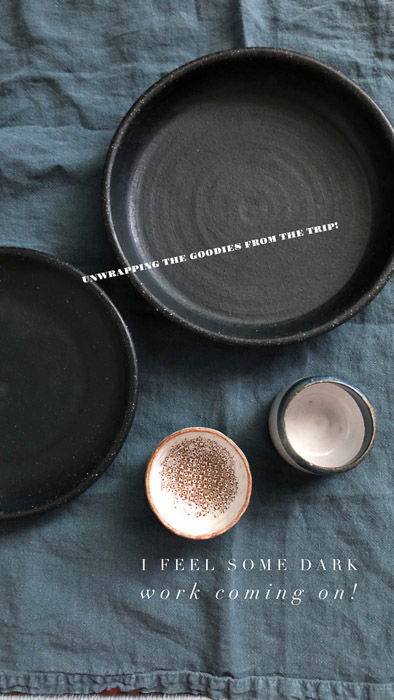What Is the Best Instagram Camera?
When it comes to the best Instagram camera, the answer comes from knowing what your images are going to be used for. So is a DSLR the best camera for Instagram, or is a smartphone camera the best for your social media photos? Here are some questions you could ask yourself to find out.
Are You Shooting for Personal or Business Use?
Sounds kinda simple right, but social media can go viral at the most unexpected of times. If you run your Instagram account to capture life’s precious moments, then using your smartphone camera for your social media photos is easy. If you’re running a business and you’re looking to find paying clients the answer might be different. There are a couple of questions you’ll want to consider to find the best Instagram camera.
What Are Clients Paying For?
Take a moment to think about what clients pay photographers for. They get paid for creativity and composition. To capture candid moments. For technical knowledge and photography gear that their clients don’t own themselves. All these things can be achieved with both a DSLR and a smartphone camera. So this brings up the question of how much you are charging and what your client’s expectations are. If you charge high, clients will expect you to bring a DSLR camera and lenses beyond a kit lens. As they have a smartphone themselves they already have access to an Instagram camera. They are paying you for gear they don’t have access to or know how to use. They are paying for your expertise with knowing which lenses to pair with the subject. Marketing yourself solely as an ‘Instagrammer’ means you can shoot with your smartphone camera. Otherwise, bring a DSLR.
Will You Use the Images Outside Social Media?
Let’s say that you market yourself as an Instagram or social media photographer. You charge accordingly. Your clients love your style and don’t mind that you shoot with your smartphone camera. What happens when you get raving fans? You take a shot that goes viral. It happens! You could be contacted by other clients or stock agencies to use the photo. The client might even think of using the image beyond their social media photos. They come to you and ask if they can have the file to print a large promotional poster. They may want to use it as an advertorial in a magazine. Now, advertorials don’t come cheap. They usually range upwards of five figures to have one full page ad. In order for them to get the most out of that investment, the client will want a quality photo. Although a smartphone camera is great for social media photography, you may be missing out on potential income. You might even think that your work isn’t good enough to have something like this happen. But let me tell you, it does. All the time. I’ve taught hundreds of students over my career and I hear many stories of being approached to license images. By shooting with a smartphone camera you could be limiting your opportunities. Which brings me to my next point.
Do Your Clients Understand Resolution?
Paying clients just want images. They don’t always understand the ins and outs of photography. They see themselves paying good money and they expect to be able to use the images as they see fit. It can be a hard conversation if the client wants to use the image you’ve shot on your smartphone camera in a way its resolution won’t allow. From experience, clients want a one size fits all solution. They want to know that when they pay a photographer, they will be able to use the images for many high quality uses. There is, of course, the ability to shoot for clients with your smartphone and still get paid. You will need to make sure that you educate them on what they can do with the images once commissioned. Having this in writing in some sort of contract is important as well. Phones are also getting better in resolution too and the quality and size they can print. The classic example is the Apple iPhone billboards of images shot on iPhone. It thus pays to know your camera, smartphone and project needs to ensure quality.
Can You Capture Quality With Your Smartphone Camera?
Not long ago, a magazine contacted me rather last minute for an important 5-page spread. They had worked with ‘Instagrammers’ a lot in the past. The art director mentioned to me that the photos they were taking weren’t up to the quality needed for print. Now, this isn’t to say that all smartphone cameras can’t print good quality photos. As the cameras we have access to get better, sometimes we can forget about the nature of photography. A good camera takes good photos. A good photographer with a good grasp on the technical aspects also takes good photos. If you think your work might be used in print, you want to consider the resolution and size your camera can print.
Getting the Variety of Angles You Need?
When it comes to shooting food photography, angles are very important. Each kind of food has a ‘hero’ or best angle. Professionals get mouth-watering pictures by using a combination of different focal lengths. They do this to ensure these angles complement the food. This allows them to get a great shot of their foodie subject in its most flattering angle. The first couple of smartphones didn’t do well to cover the range of angles needed. The camera was equal to a wide angle lens. This meant that you could only capture two angles, straight-on and overhead. The angles between gave distortion and weren’t great for those up-close macro shots. This means that old smartphone cameras can be limited in capturing food’s best angle. This has somewhat changed in the last few years. Competition between smartphone cameras is fierce. As they get better, they are also starting to offer more competitive features. Many phones now come with either dual cameras or the ability to attach different lenses. It’s now easier than ever to get a great angle with smartphone photography. A couple of years ago you’d have needed a DSLR to get the range of angles that you need to shoot food. Now dual cameras and different focal lengths come standard in some brands. One of the most important angles in food is being able to capture the 45-degree angle. If your smartphone has a dual camera, you can now capture this angle, (and reduce distortion).
Do You Have Access to Histograms?
Being able to read your histograms when shooting is a crucial part of creating beautiful images. This is especially true when it comes to shooting in a new or tricky lighting situation. A quick histogram check will tell you the dynamic range that you’ve captured. Where your tones are sitting and if you’ve clipped any of your extremes. Smartphones don’t come with this feature built-in, (as of the date of writing). Yet, you can buy apps that can help you read the histograms of images you take on your smartphone. If you’re willing to buy an app to show you your histograms, then this will become easier. It will help you to create better images for your social media.
Do You Want to Make Passive Income With Stock Images?
Social media is the place to be for so many reasons. More people are turning to these visual platforms to make their purchasing decisions. Images that end up on Instagram and Pinterest are searched by small businesses, agencies and magazines. They are often looking for potential images to license for their marketing campaigns. I license many images each year from my portfolio that have been found on social media. You can also submit the images you’re taking for social media, (apart from client work), to stock agencies. It’s a great way to make some passive income on the side. Stock agencies have strict guidelines on camera settings required for successful submissions. Photographers will submit images they take for social media to agencies. But these images are usually shot on a DSLR camera on manual mode. If this is something that you are thinking of exploring, then you may want to consider having a DSLR. And a pro tip, images of flatlays, pretty home office working desks do really well on stock agencies.
What About Instagram Stories?
Even though I am a professional photographer, I still use my iPhone for my Instagram Stories. Smartphones are great in getting quick and beautiful images for social media channels. Especially where the images don’t last longer than 24 hours. Plus the beauty of this form of sharing is that it doesn’t have to be perfect. Everyone expects Stories to be imperfect, ‘in the moment’ and a little raw. Sharing images on your Stories is an important part of a well rounded social presence. The more stories you’re able to post, the more likely it is that you’ll be bumped up to the top of the explore search. So being able to share quickly from your smartphone camera is a win.
Just Want a Camera for Personal Social Media Photography?
The good news? If you’re just wanting to shoot for your personal social media, then you can just use your smartphone. Even if you are a little bit of a perfectionist, camera technology is getting better. Allowing us to produce better quality images in less time. If you pair this with apps to help you edit and keep a consistent look, you can take high-quality images that feel like a DSLR. I know professionals who have a second, (personal) Instagram account. They use their smartphone camera to document their lives and take followers on a behind the scenes journey. Now that you’ve made it this far, maybe you’ve asked yourself all of these questions. You don’t expect that any of these will be relevant in how you capture images. Perhaps making a business out of taking images isn’t for you. The good news is that your smartphone will be your best friend. So start taking photos for Instagram now! And before you head off, perhaps something for you to ponder over.
Is Smartphone Photography Your Unique Selling Point?
It’s a noisy world out there. Being able to stand out from the crowd with a unique selling point is crucial. It’s how we gain a lot of exposure and followers online. Having a unique spin on your social media channels will get you hired. Some wedding photographers have positioned themselves as ‘film only’ shooters. While this could sound risky, if you can pull it off, you can charge a premium for such a niche element. Maybe your unique selling point is that you shoot for big brands and you only do it with smartphone photography. That could really make a statement.
Conclusion
At the end of the day, the best camera is the one that you have access to. Being able to start taking photos for social media and take your followers on a journey is important. If you want to up-level your Instagram game, being able to foresee where your photography is going is important. Asking yourself some of these questions will help you decide which camera is best for you. From many years shooting in the industry, I’ve had to ask myself these questions too. I’ve had the project experience to know that these things come up. It’s not far-fetched that someone might want to license your image from you. Weigh up your answers and switch to whichever will help you get the best quality work. If you decide to focus on making money out of the platform, come back and ask yourself these questions again. Do you currently shoot with a DSLR or a smartphone? Which do you prefer? Which camera gets you the quality you need?





title: “The Best Instagram Camera Or Smartphone In 2023” ShowToc: true date: “2023-01-10” author: “Edwardo King”
What Is the Best Instagram Camera?
When it comes to the best Instagram camera, the answer comes from knowing what your images are going to be used for. So is a DSLR the best camera for Instagram, or is a smartphone camera the best for your social media photos? Here are some questions you could ask yourself to find out.
Are You Shooting for Personal or Business Use?
Sounds kinda simple right, but social media can go viral at the most unexpected of times. If you run your Instagram account to capture life’s precious moments, then using your smartphone camera for your social media photos is easy. If you’re running a business and you’re looking to find paying clients the answer might be different. There are a couple of questions you’ll want to consider to find the best Instagram camera.
What Are Clients Paying For?
Take a moment to think about what clients pay photographers for. They get paid for creativity and composition. To capture candid moments. For technical knowledge and photography gear that their clients don’t own themselves. All these things can be achieved with both a DSLR and a smartphone camera. So this brings up the question of how much you are charging and what your client’s expectations are. If you charge high, clients will expect you to bring a DSLR camera and lenses beyond a kit lens. As they have a smartphone themselves they already have access to an Instagram camera. They are paying you for gear they don’t have access to or know how to use. They are paying for your expertise with knowing which lenses to pair with the subject. Marketing yourself solely as an ‘Instagrammer’ means you can shoot with your smartphone camera. Otherwise, bring a DSLR.
Will You Use the Images Outside Social Media?
Let’s say that you market yourself as an Instagram or social media photographer. You charge accordingly. Your clients love your style and don’t mind that you shoot with your smartphone camera. What happens when you get raving fans? You take a shot that goes viral. It happens! You could be contacted by other clients or stock agencies to use the photo. The client might even think of using the image beyond their social media photos. They come to you and ask if they can have the file to print a large promotional poster. They may want to use it as an advertorial in a magazine. Now, advertorials don’t come cheap. They usually range upwards of five figures to have one full page ad. In order for them to get the most out of that investment, the client will want a quality photo. Although a smartphone camera is great for social media photography, you may be missing out on potential income. You might even think that your work isn’t good enough to have something like this happen. But let me tell you, it does. All the time. I’ve taught hundreds of students over my career and I hear many stories of being approached to license images. By shooting with a smartphone camera you could be limiting your opportunities. Which brings me to my next point.
Do Your Clients Understand Resolution?
Paying clients just want images. They don’t always understand the ins and outs of photography. They see themselves paying good money and they expect to be able to use the images as they see fit. It can be a hard conversation if the client wants to use the image you’ve shot on your smartphone camera in a way its resolution won’t allow. From experience, clients want a one size fits all solution. They want to know that when they pay a photographer, they will be able to use the images for many high quality uses. There is, of course, the ability to shoot for clients with your smartphone and still get paid. You will need to make sure that you educate them on what they can do with the images once commissioned. Having this in writing in some sort of contract is important as well. Phones are also getting better in resolution too and the quality and size they can print. The classic example is the Apple iPhone billboards of images shot on iPhone. It thus pays to know your camera, smartphone and project needs to ensure quality.
Can You Capture Quality With Your Smartphone Camera?
Not long ago, a magazine contacted me rather last minute for an important 5-page spread. They had worked with ‘Instagrammers’ a lot in the past. The art director mentioned to me that the photos they were taking weren’t up to the quality needed for print. Now, this isn’t to say that all smartphone cameras can’t print good quality photos. As the cameras we have access to get better, sometimes we can forget about the nature of photography. A good camera takes good photos. A good photographer with a good grasp on the technical aspects also takes good photos. If you think your work might be used in print, you want to consider the resolution and size your camera can print.
Getting the Variety of Angles You Need?
When it comes to shooting food photography, angles are very important. Each kind of food has a ‘hero’ or best angle. Professionals get mouth-watering pictures by using a combination of different focal lengths. They do this to ensure these angles complement the food. This allows them to get a great shot of their foodie subject in its most flattering angle. The first couple of smartphones didn’t do well to cover the range of angles needed. The camera was equal to a wide angle lens. This meant that you could only capture two angles, straight-on and overhead. The angles between gave distortion and weren’t great for those up-close macro shots. This means that old smartphone cameras can be limited in capturing food’s best angle. This has somewhat changed in the last few years. Competition between smartphone cameras is fierce. As they get better, they are also starting to offer more competitive features. Many phones now come with either dual cameras or the ability to attach different lenses. It’s now easier than ever to get a great angle with smartphone photography. A couple of years ago you’d have needed a DSLR to get the range of angles that you need to shoot food. Now dual cameras and different focal lengths come standard in some brands. One of the most important angles in food is being able to capture the 45-degree angle. If your smartphone has a dual camera, you can now capture this angle, (and reduce distortion).
Do You Have Access to Histograms?
Being able to read your histograms when shooting is a crucial part of creating beautiful images. This is especially true when it comes to shooting in a new or tricky lighting situation. A quick histogram check will tell you the dynamic range that you’ve captured. Where your tones are sitting and if you’ve clipped any of your extremes. Smartphones don’t come with this feature built-in, (as of the date of writing). Yet, you can buy apps that can help you read the histograms of images you take on your smartphone. If you’re willing to buy an app to show you your histograms, then this will become easier. It will help you to create better images for your social media.
Do You Want to Make Passive Income With Stock Images?
Social media is the place to be for so many reasons. More people are turning to these visual platforms to make their purchasing decisions. Images that end up on Instagram and Pinterest are searched by small businesses, agencies and magazines. They are often looking for potential images to license for their marketing campaigns. I license many images each year from my portfolio that have been found on social media. You can also submit the images you’re taking for social media, (apart from client work), to stock agencies. It’s a great way to make some passive income on the side. Stock agencies have strict guidelines on camera settings required for successful submissions. Photographers will submit images they take for social media to agencies. But these images are usually shot on a DSLR camera on manual mode. If this is something that you are thinking of exploring, then you may want to consider having a DSLR. And a pro tip, images of flatlays, pretty home office working desks do really well on stock agencies.
What About Instagram Stories?
Even though I am a professional photographer, I still use my iPhone for my Instagram Stories. Smartphones are great in getting quick and beautiful images for social media channels. Especially where the images don’t last longer than 24 hours. Plus the beauty of this form of sharing is that it doesn’t have to be perfect. Everyone expects Stories to be imperfect, ‘in the moment’ and a little raw. Sharing images on your Stories is an important part of a well rounded social presence. The more stories you’re able to post, the more likely it is that you’ll be bumped up to the top of the explore search. So being able to share quickly from your smartphone camera is a win.
Just Want a Camera for Personal Social Media Photography?
The good news? If you’re just wanting to shoot for your personal social media, then you can just use your smartphone. Even if you are a little bit of a perfectionist, camera technology is getting better. Allowing us to produce better quality images in less time. If you pair this with apps to help you edit and keep a consistent look, you can take high-quality images that feel like a DSLR. I know professionals who have a second, (personal) Instagram account. They use their smartphone camera to document their lives and take followers on a behind the scenes journey. Now that you’ve made it this far, maybe you’ve asked yourself all of these questions. You don’t expect that any of these will be relevant in how you capture images. Perhaps making a business out of taking images isn’t for you. The good news is that your smartphone will be your best friend. So start taking photos for Instagram now! And before you head off, perhaps something for you to ponder over.
Is Smartphone Photography Your Unique Selling Point?
It’s a noisy world out there. Being able to stand out from the crowd with a unique selling point is crucial. It’s how we gain a lot of exposure and followers online. Having a unique spin on your social media channels will get you hired. Some wedding photographers have positioned themselves as ‘film only’ shooters. While this could sound risky, if you can pull it off, you can charge a premium for such a niche element. Maybe your unique selling point is that you shoot for big brands and you only do it with smartphone photography. That could really make a statement.
Conclusion
At the end of the day, the best camera is the one that you have access to. Being able to start taking photos for social media and take your followers on a journey is important. If you want to up-level your Instagram game, being able to foresee where your photography is going is important. Asking yourself some of these questions will help you decide which camera is best for you. From many years shooting in the industry, I’ve had to ask myself these questions too. I’ve had the project experience to know that these things come up. It’s not far-fetched that someone might want to license your image from you. Weigh up your answers and switch to whichever will help you get the best quality work. If you decide to focus on making money out of the platform, come back and ask yourself these questions again. Do you currently shoot with a DSLR or a smartphone? Which do you prefer? Which camera gets you the quality you need?




